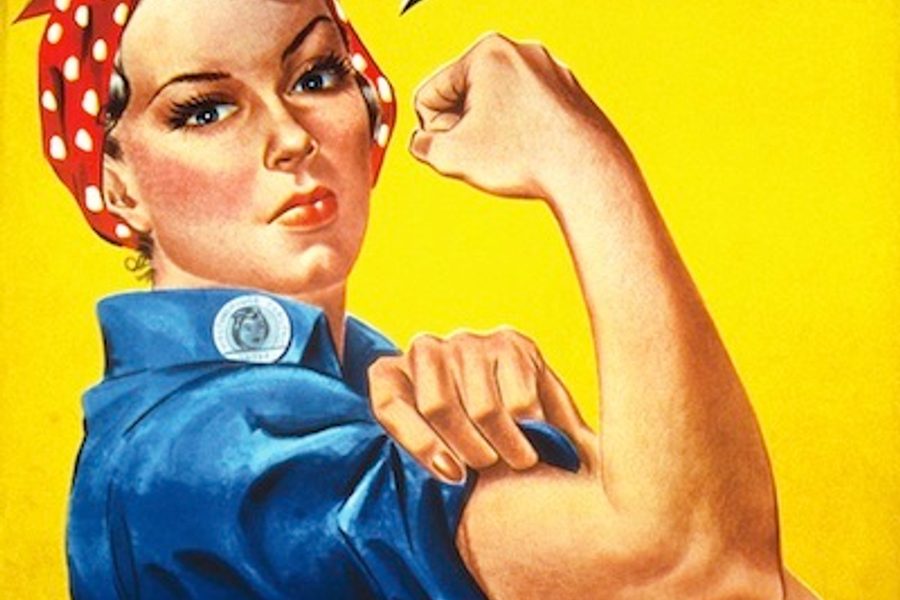
According to the Pew Research Center’s recent “Breadwinner Moms” report, women are the main breadwinners in more American families than ever before. In 2013, mothers are the primary or sole providers in four of every 10 families. This trend has largely been driven by women’s increasing presence in the workforce, where they now make up nearly half of U.S. workers.
But those who dream of gender parity in the labor force — and in domestic life — aren’t declaring victory yet. As the Pew report shows, this growing wave of “breadwinner moms” is in fact made up of two groups of women, whose differing realities fall along the fault lines of race and class. And in both these groups, thanks to biased cultural gender expectations, most working mothers continue to shoulder additional domestic burdens that their male counterparts do not.
According to the Pew report, over a third of “breadwinner moms” are married women who make more than their husbands. These women are slightly older and disproportionately white and college-educated, with a median family income of $80,000 — more than the national median and more than the average in married households where the man is the top earner. But the majority of “breadwinner moms,” more than 60 percent, are single mothers living a very different reality. These women are younger than their married counterparts and less educated, more likely to black or Latina and to never have been married. And they possess the lowest median income of all families with children — just $23,000.
In addition to the economic insecurity faced by many single mothers, they are also stigmatized: Sixty-four percent of Pew respondents labeled the rise in single motherhood a “big problem.” This should come as no surprise to anyone who has followed the national dialogue about the changing American family, and families of color in particular. Single mothers are blamed for everything from collapsing morals to increasing gun violence. And the proposed solutions to societal problems largely focus on curbing female sexuality and procreation rather than addressing the structural inequities, such as the stagnant minimum wage or an ailing educational system, that contribute to poverty and poor outcomes for children.
The stigma of single motherhood can even impact a working woman’s ability to provide for her offspring, says DeShong Perry-Smitherman, who was a single teen mother. Perry-Smitherman, who worked in television for 15 years, says she took pains to hide her single-mother status from some employers.
“When I worked for The Oprah Winfrey Show, I hid the fact that I had a toddler,” she says. “Then, years later, in my first TV news job, my then 7-year-old daughter would hide, sleeping under my desk overnight, while I produced a morning newscast. I felt that in both these jobs, being a young, unmarried mother would make me undesirable to my bosses and unable to be promoted.”
Whether or not a “breadwinner mom” is married or single, one thing doesn’t change: They may bring home most (or all) of the bacon, but they are still expected to fry it up in the pan (and help the kids with their homework and get them dressed for bed). In 1989, sociologist Arlie Hochschild coined the term “second shift” to explain how women who work to earn money also tend to have primary responsibility for unpaid domestic labor, and more than two decades later, our society still views domestic duties, including childcare, as not just women’s work, but a woman’s responsibility.
The Labor Department’s American Time Use survey shows that married, full-time working mothers, on average, do more household and child-rearing work combined than do full-time working fathers, giving them less time for leisure, personal care and rest. According to the survey, on an average day, 20 percent of men did housework compared with 48 percent of women; 39 percent of men did food preparation or cleanup, compared with 65 percent of women. Of course, single mothers are likely to carry even more of a load.
Meanwhile, the Pew study reveals a public ambivalent about working mothers: 51 percent of respondents believe children are better off with Mommy at home, while only 8 percent believe the same of fathers. (This belief, by the way, runs contrary to a recent study by the United Kingdom’s Academy of Social Sciences showing that whether or not a mother works during the first years of her child’s life has no impact on literacy, math skills and behavior.)
For single mothers, this pressure presents a double bind: If they work, they’re accused of contributing to social ills, but if they stay home to care for their children, they’re seen as lazy and freeloading “welfare queens.”
These societal pressures can leave working mothers burdened with guilt. Camille DeBose, a married mother and educator who is no stranger to the “second shift,” says, “You feel guilty about not being a fantastic mom. You feel guilty about not being a fantastic wife. You feel guilty when your work suffers, not from ineptitude, but from literal fatigue.”
The question, then, becomes: How can we ensure that as more women enter the workforce, those women and their families continue to thrive?
First, while we celebrate women’s gains in the workplace, we must simultaneously work to free them from the “second shift” and recognize that men have equal capacity to care for hearth and home. This is already happening, as the number of stay-at-home dads has doubled in the last decade and fathers are more involved than they used to be.
There’s reason to think that a more just division of domestic labor makes for a marriage that is not just fairer, but also happier. Dr. Jeannette Wicks-Lim, assistant research professor at the Political Economy Research Institute of the University of Massachusetts, Amherst, points out that the uneven division of work typical among straight, two-earner households contributes to conflict: “Evidence indicates that women continuing to work inside the home in addition to outside the home is what makes successful marriage and raising children harder.” She points to research into less traditional divisions of household work, particularly among same-sex couples, and a possible connection to less conflict in such relationships.
We can also encourage flexible workplaces that support employees who are parents. Working mother Liza Talusan says she is fortunate to be able to bring her children to work on short school days or when childcare falls through. And her children benefit as well.
“My children are learning what it means to be in a professional work environment,” says Talusan. “They know that there are expectations for behaving in a particular way, but they also see me, their mom, in a different role. They have seen me speak in front of hundreds of people, sat with me as I talked to a student, and they have met a wonderfully diverse group of students who have helped shaped their lives, too.”
But flexibility is only part of the equation for never-married, single-mother-headed households. These women need sufficient compensation for paid work outside the home so that they can cover their families’ basic budgets.
“Having an adequate pay rate is key,” says Wicks-Lim. “Since these women basically have to work double-duty as the ‘breadwinner’ and ‘homemaker,’ they need to be employed, but can’t work excessive hours outside the home.
“What I’ve found is that the combination of a more robust minimum wage and greater Earned Income Tax Credit would support greater employment rates, higher wages, and thus higher earnings among single mothers with a high school degree or less — women who tend to have below-average income.”
Wicks-Lim points out that these measures are particularly important now, as low-wage sector jobs such as food service, home health care, retail and employment services (i.e., temp agencies) top the list of industries adding jobs to the U.S. economy.
Women’s workplace gains would seem to be a positive development, ostensibly allowing women and families greater access to more economic stability and influence. But until we have equality in the domestic sphere, coupled with sound labor, economic and workplace policy, women’s gains in the workforce will be at risk, and their families will be, too.





